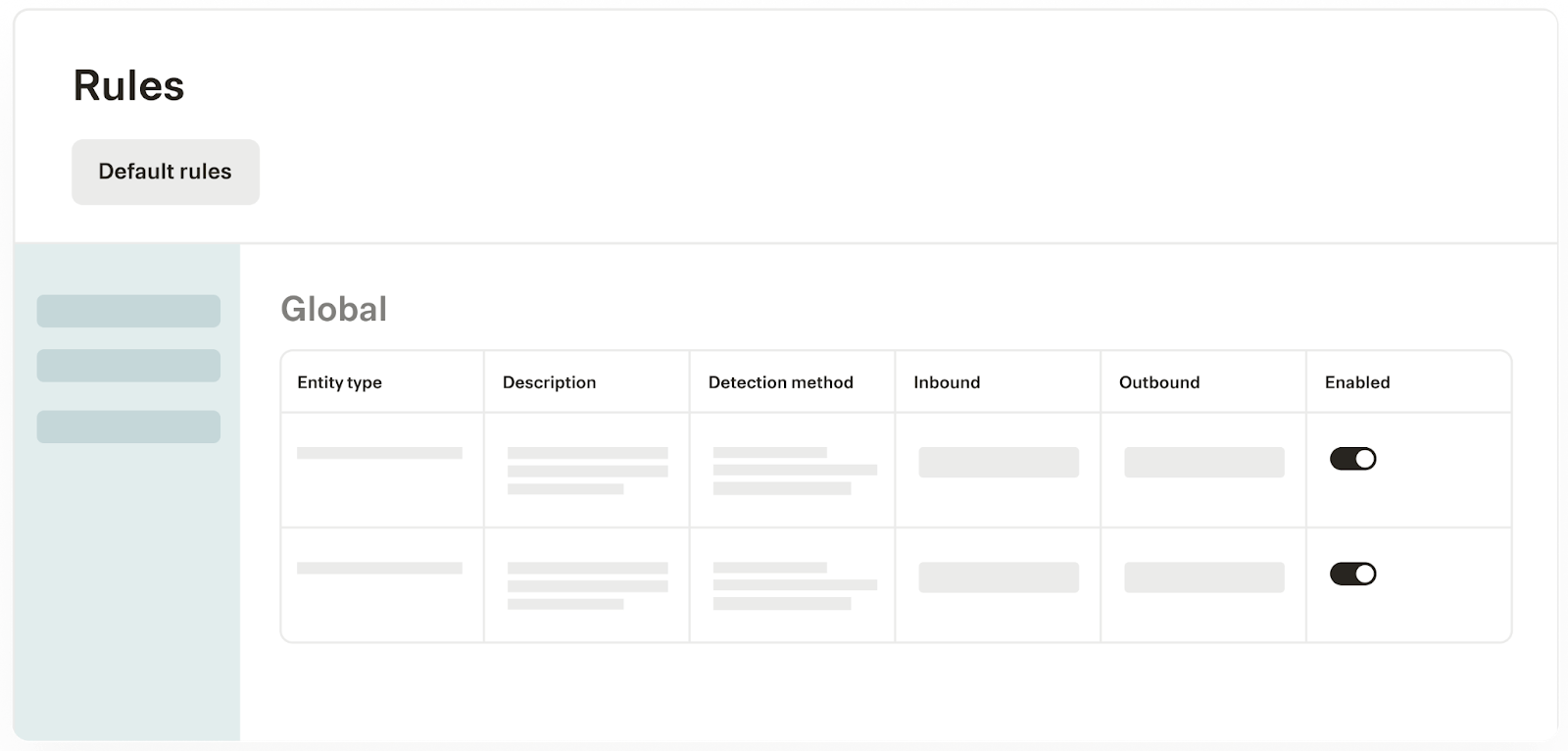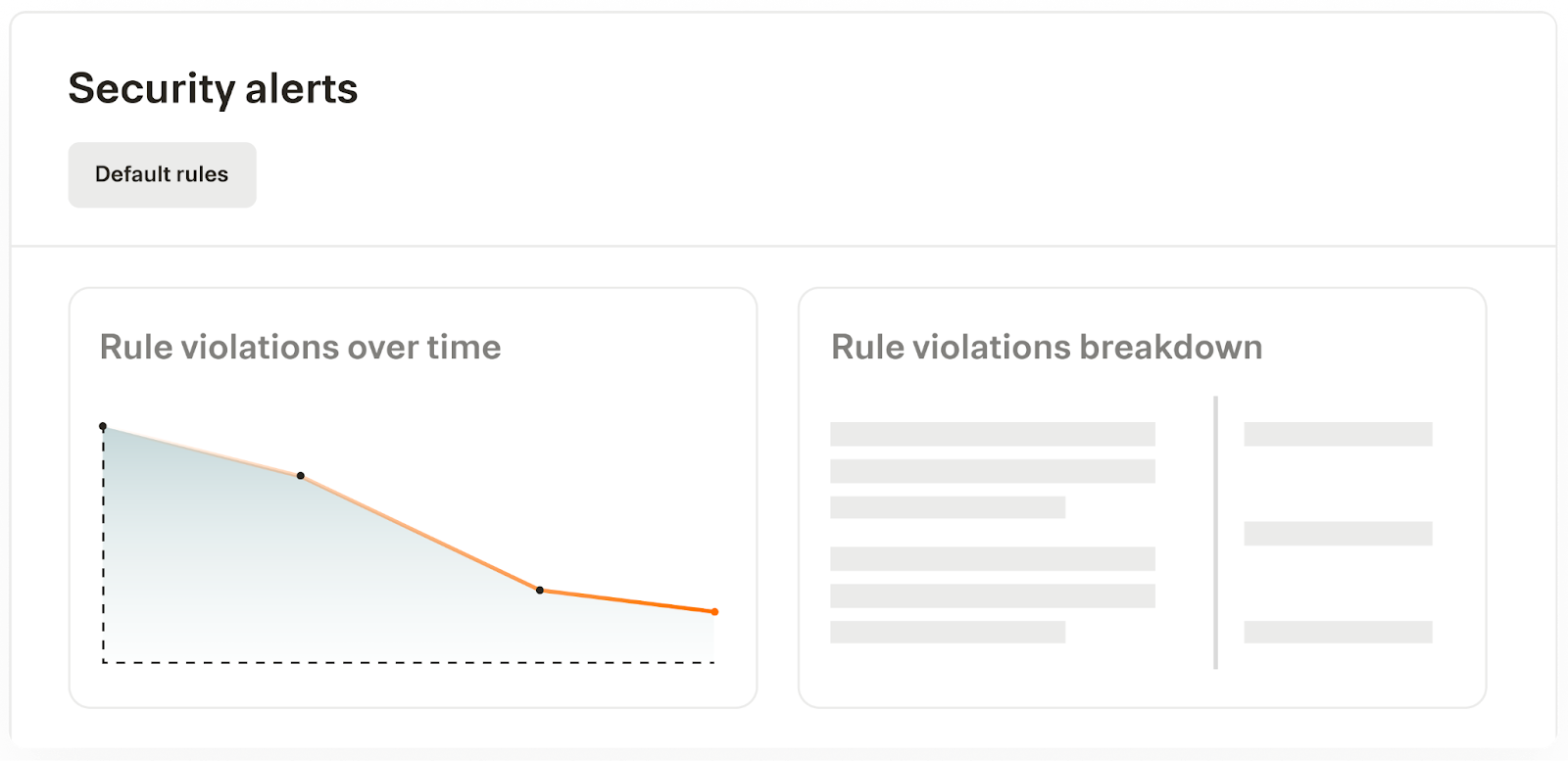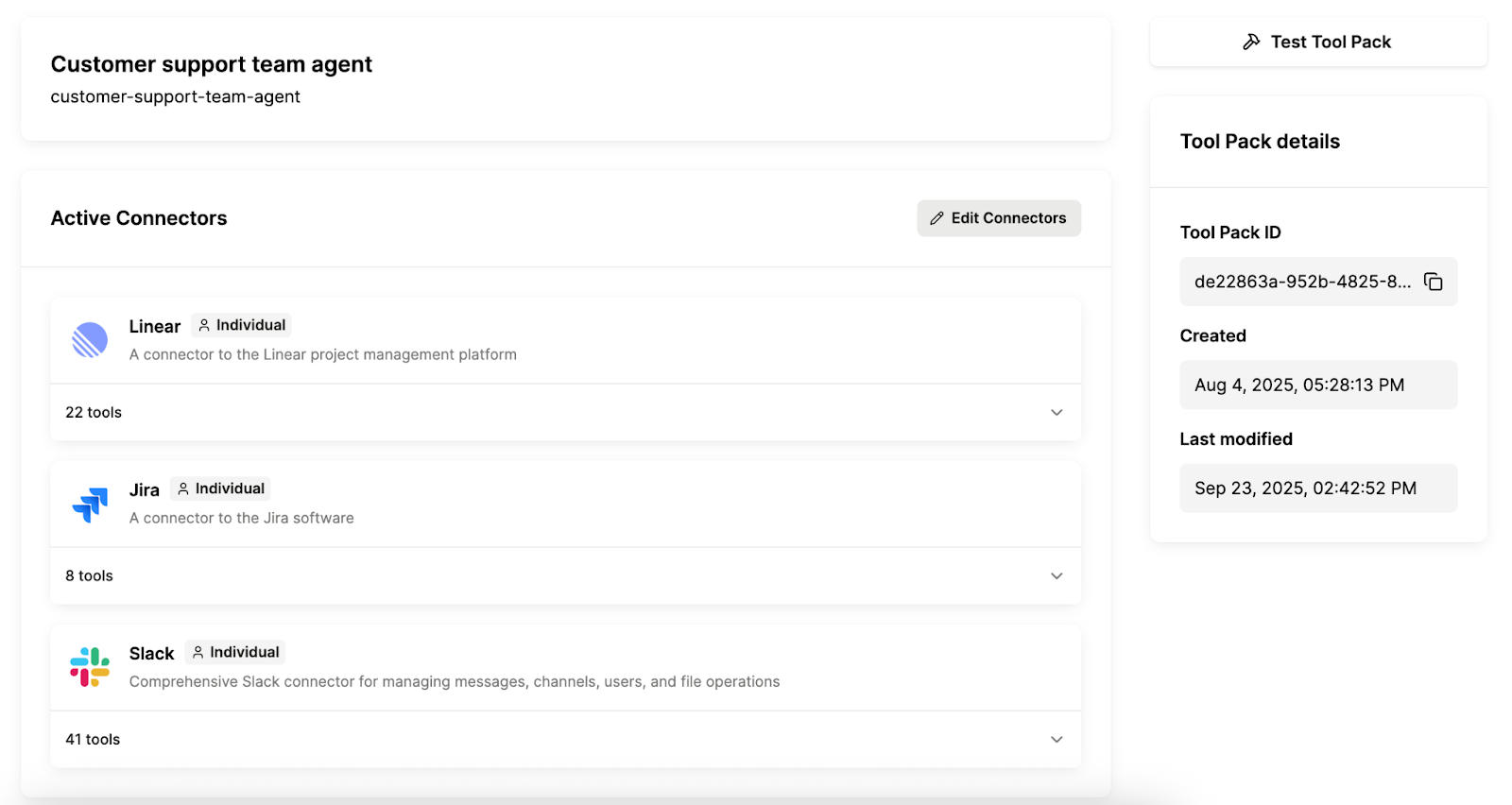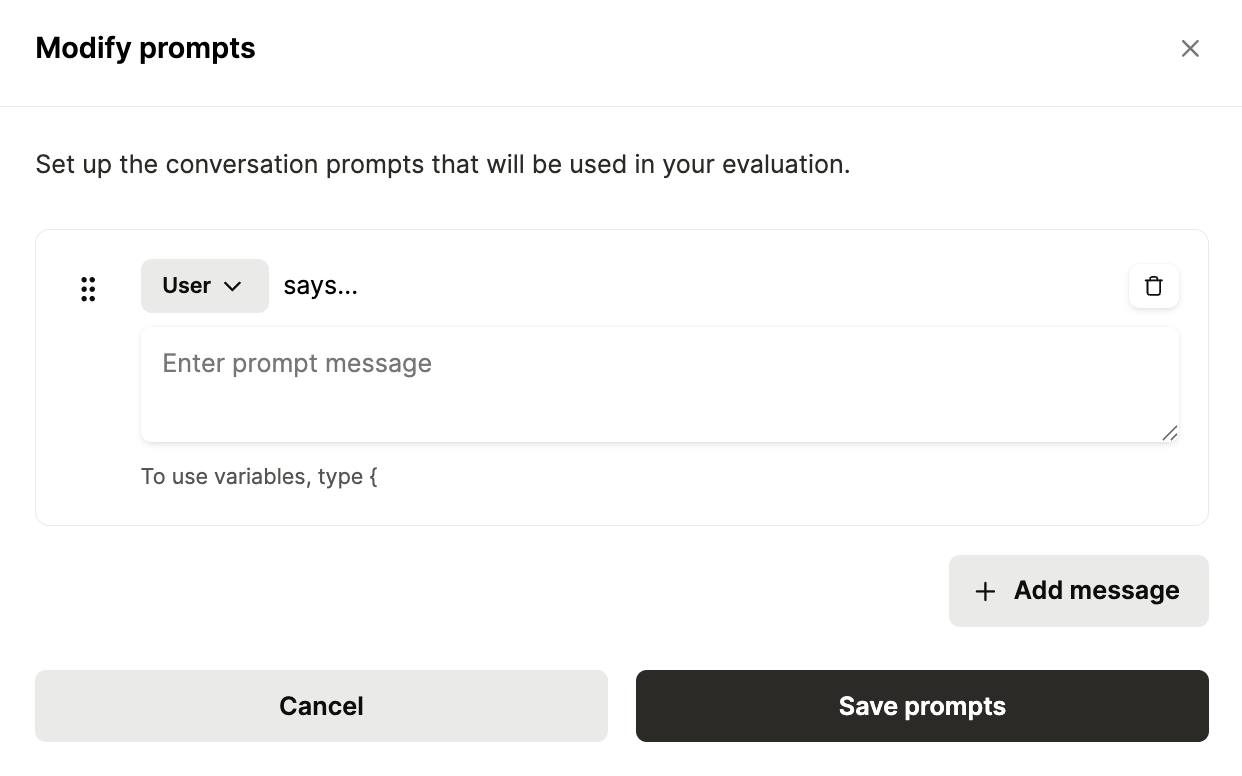Table of contents
A guide to managing AI agents effectively
.png)
Based on research from Gartner, 33% of enterprise software will offer agentic AI by 2028.
These AI agents are expected to help users save time, avoid countless tedious tasks, and access timely and actionable insights.
But without effective measures in place, enterprise software companies' agents can leak data or perform the wrong set of tasks, leading users to avoid them.
To that end, we’ll walk you through how AI agent management works, why it’s critical, and how you can perform it.
What is AI agent management?
It's a combination of proactive and reactive measures to ensure AI agents operate securely, reliably, and in alignment with organizational policies. This involves enforcing governance rules, monitoring performance, and addressing issues as needed.
AI agent management is typically handled through an AI agent management platform: a centralized system that helps organizations securely integrate AI agents with tools from Model Context Protocol (MCP) servers, and monitor and manage tool calls.

{{this-blog-only-cta}}
The core components of managing AI agents
AI agent management includes several components, which can vary slightly depending on the platform you’re using.
Here are just a few core items:
- A dashboard to monitor your agents’ activities holistically. This includes insights like the tool calls your agents have made over a set period of time, the connectors that are active for certain users, the rule violations that have recently taken place, and so on
- Customizable rules to determine how agents interact with certain data types. This includes blocking specific data from being shared, allowing sharing with redactions, or allowing sharing with mandatory logging and alerts. You can also apply these rules to particular agents, users, tools, or connectors before tool calls are executed

- Alerts when rules are violated. These alerts should include all of the details necessary to troubleshoot a rule violation, such as the date, tool name, and data type compromised

- Fully-searchable logs to get visibility on agents’ activities and troubleshoot issues. These logs can include the user who invoked a tool call, the arguments used and returned from the call, the date it happened, and more

- A testing suite to pressure test your tools. You can test your AI agents with any prompt across large language models (LLMs), tools, connectors, and more
- Ability to connect your AI agents with a wide range of connectors. These connectors and associated tools can be pre-built or created by users
Related: The best agent management platforms in 2026
Why AI agent management is important
It comes down to several factors:
- Prevents data leaks: AI agents can unintentionally expose sensitive information (e.g., social security numbers) through hallucinations. They can also be manipulated by malicious actors using techniques like prompt injection to extract confidential data
Effective agent management mitigates these risks by enforcing authentication, restricting certain behaviors, alerting you when an agent shows signs of compromise, and triggering predefined remediation workflows.
- Helps agents call the right tools: By providing comprehensive and descriptive tools, AI agent management platforms can help your AI agents consistently make the right tool calls, regardless of the prompts they receive
- Supports pre-built connectors: Agent management platforms often come with a large library of pre-built connectors and tools, enabling fast integrations without the need to stand up and maintain third-party MCP servers. This also reduces your reliance on external tools that may be insecure or inconsistently maintained
- Provides visibility on potential issues during testing: Even if you’re confident your agents will make the right tool calls, unexpected edge cases can cause failures. AI agent management platforms let you safely test agents in controlled environments, helping you uncover and fix these issues before they reach production
Related: Why AI agent authentication is critical
Examples of managing AI agents
AI agent management can take countless forms. Here are just a few use cases worth highlighting.
Lead routing
Say you build an AI agent that can automatically enrich and route a warm lead to the right sales rep.
To ensure the agent only shares the lead with the appropriate sales rep and doesn’t enrich the lead with unnecessary details, you can connect the agent to CRM and data enrichment MCP connectors. The agent can then use tools like <code class="blog_inline-code">list_opportunity </code>(to find the opportunity owner) and <code class="blog_inline-code">enrich_contact</code> (to add relevant firmographic and contact details).
You can then establish the following rules and alerts:
1. If the agent doesn’t share the lead with the assigned owner, the incident is logged and sales leadership gets notified via Slack.
2. If the lead isn’t enriched with only the necessary details, the incident is logged and sales leadership gets alerted on Slack.
Incident management
To help IT manage a wide range of device and application incidents across their employee base, you can build an agent that automatically creates issues in an IT service management (ITSM) platform whenever an employee submits a form.
More specifically, the agent can use tools in the ITSM platform’s MCP connector, such as <code class="blog_inline-code">create_issue</code> (to open a new ticket) and <code class="blog_inline-code">add_comment</code> (if the requestor adds more context to their issue).
To ensure the agent behaves within defined guardrails, you can establish the following rules and alerts:
- If the agent fails to create an issue from an incident submission, the incident is logged and IT is notified via Slack
- If the agent fails to categorize the incident in the ITSM, the incident is logged and IT is notified via Slack
- If the agent attempts to modify or close an issue without confirmation from an authorized IT member, the action is blocked, logged, and IT leadership is notified via Slack
Customer support escalations
To help your customer support team escalate client issues that require developer assistance, you can build an agentic workflow where once a support rep requests an escalation, the agent automatically:
- Calls the <code class="blog_inline-code">create_issue</code> tool in your developer's project management platform (e.g., GitHub)
- Posts the created issue to your engineering team’s communications platform (e.g., Slack) via the communication platform's <code class="blog_inline-code">post_message</code> tool
You can manage and monitor the agent’s performance over time by setting up rules and alerts like:
- If the agent doesn’t create an issue, the incident is logged and your support/engineering leadership teams are notified via Slack
- If required fields aren’t populated when creating an issue, the incident is logged and support/engineering leadership gets notified via Slack
- If the agent creates an issue but doesn’t share it in the appropriate Slack channel, the incident is logged and support/engineering leadership is alerted in Slack
Automated candidate sourcing
Say you offer a candidate sourcing platform that uses an AI agent to source and recommend specific candidates for a given role (e.g., Juicebox).
Your AI agent can pull from customers’ applicant tracking systems (ATSs) to get open roles (through the <code class="blog_inline-code">list_candidates</code> tool call) and their associated job descriptions (through the <code class="blog_inline-code">get_candidates</code> tool call); and it can use anonymized historical candidate data from similar roles to identify best-fit candidate profiles.
To help manage your AI agent, you can set up the following rules and alerts:
- If, for a given role, the agent uses historical candidate data from an irrelevant department, the incident gets logged and your team—along with the affected customer—gets notified on Slack
- If the agent pulls job descriptions that aren’t linked with an active role, the incident gets logged and your team and the affected customer get notified on Slack
- If the agent recommends candidates who don’t meet the minimum qualifications specified in the job description, the incident is logged and your internal team and affected customer are alerted via Slack
Best practices for managing AI agents
To help you manage AI agents effectively, you should adopt the following best practices.
Establish collections of connectors and tools that map to use cases
As AI agents expand across your organization or platform, the number of connectors and tools they rely on can quickly grow complex. Without structure, agents may access tools they don’t need, duplicate functionality, or—worse—call unvetted and insecure resources.
To that end, organize connectors and tools into collections that map directly to business use cases.
For example, if you’re building a customer support agent, you can give it access to a set of connectors and tools that allow it to identify product bugs (e.g., in Linear), create and update issues (e.g., in Jira) and deliver updates to the relevant stakeholders (e.g., in Slack).

Related: How to build AI agents successfully
Test tools across every potential prompt
You can likely guess the majority of prompts for using an AI agent, but there may be unexpected ones that can lead to failures or data leaks.
To account for every prompt imaginable, you can:
- Analyze the prompts used for similar agents you’ve built (assuming they exist)
- Invite a diverse group of testers across teams to experiment with the agent and see the prompts they use
- Use an AI chatbot like ChatGPT to generate edge-case or adversarial prompts that mimic how real users—or attackers—might try to push your agent beyond its expected use
Once you have a handle on all of the potential prompts a given agent may receive, you can add and evaluate each through your agent management platform.

Related: Best practices for testing AI agents
Adopt a platform that supports all of your agent management needs
Merge Agent Handler offers the most complete AI agent management platform.
It provides everything you need to securely connect and control your agents—such as prebuilt connectors, Tool Packs, least-privilege identities, policy-based rules and approvals, and fully-searchable logs.
On top of that, it includes an evaluation suite and Connector Studio, enabling you to move fast while maintaining security, auditability, and enterprise-grade scale.
Start using Merge Agent Handler for free by creating an account!



.png)



.png)
.png)

